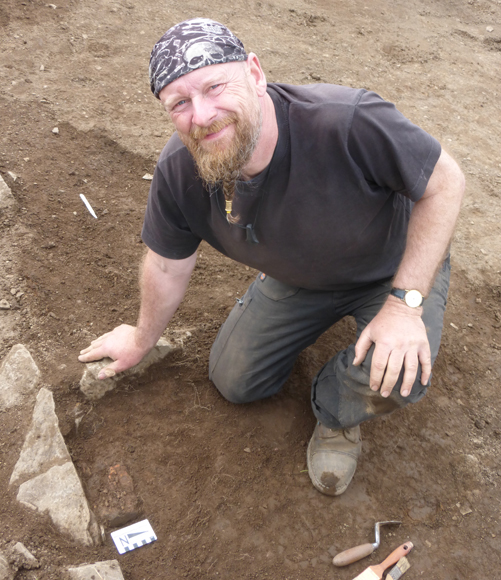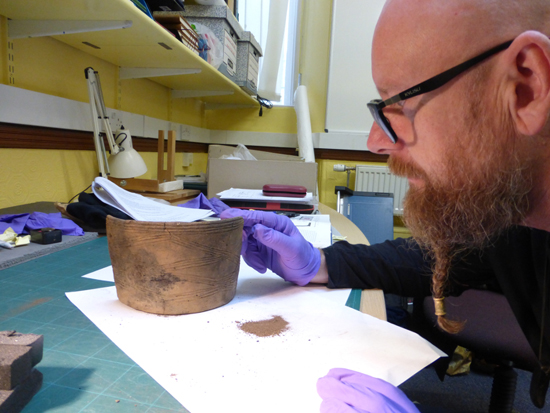Did Ancient Potters use Sheep Dung to Fire their Clay Pots?
A project is underway to provide “hands-on” information about how ancient Britons could have fired clay pots before the invention of kiln technology. By undertaking practical experiments trying different sorts of fuel to fire clay vessels, archaeologists hope to find out more about the way our ancestors lived their lives.
Ancient Potters and Sheep Dung
A new study, with the catchy title “Dung and Dusted”, aims to do just that, specifically by examining whether sheep dung could have been used to fire pots before the widespread use of kilns. Dr Michael Copper, from the School of Archaeological and Forensic Sciences in the Faculty of Life Sciences (University of Bradford), hopes that these practical experiments will help researchers to gain a better understanding of how different, ancient communities were organised.
Dr Mike Copper – Part of the “Dung and Dusted” Project

Picture credit: University of Bradford
Dr Copper explained:
“Despite considerable advances in our knowledge of how ancient pots were made and used, archaeologists still know remarkably little about how prehistoric pottery was fired before the introduction of the potter’s kiln, including what fuels were used. One abundant and freely available fuel source in prehistory would have been animal dung. Could it then have been the case that dried dung was used to fire pottery in prehistoric Britain and Ireland?”
A Six-month Project
The research project is funded by the Gerda Henkel Foundation and is planned to last around six months. A series of firings of hand-built replica prehistoric pots using sheep dung and other fuels are planned. The vessels and firing sites will then be analysed to see whether residues left behind can be matched to ancient pottery or can be used to help archaeologists identify dung firing evidence at archaeological digs.
Dr Copper, a specialist in prehistoric pottery and ancient ceramic technology, added:
“In terms of why it is significant, experimental projects such as this provide an important way for archaeologists to understand how prehistoric people went about tasks such as pot firing using materials and techniques with which we are no longer familiar. Pottery is one of the most important finds made on archaeological excavations. Its varied forms help us to date sites and analysis of burnt food residues can tell us about what the inhabitants ate. If we find that animal dung was used to fire the pots then it could be that people were managing animals with one eye on using dung as a product.”
Dr Mike Copper Examining an Ancient Clay Pot
Picture credit: University of Bradford
Learning the Secrets of Ancient Potters Through Experimentation
The researchers, which include Dr Cathy Batt, an expert in magnetic studies with extensive experience of investigating ancient firing sites and Dr Gregg Griffin, a recent PhD graduate who looked at ways to identify fuels from residues discovered on archaeological excavations, hope to gain an understanding of how ancient societies were organised with pot-making and firing a central part of the community. Variations in the use of technology, such as choice of fuel for pottery making, are passed down from one generation to another. This can provide archaeologists with a lot of additional information about how a community organised itself.
We look forward to hearing more as this project concludes and we wonder whether the sheep will be cited in the subsequent paper as contributors…
Everything Dinosaur acknowledges the assistance of a press release from the University of Bradford in the compilation of this article.
The Everything Dinosaur website: Prehistoric Animal Figures, Toys and Gifts.







Leave A Comment